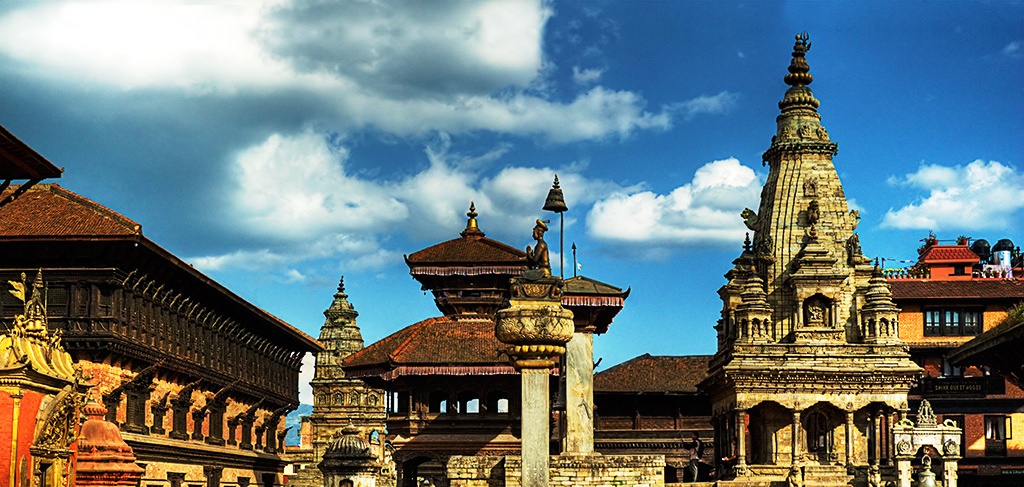
World Heritage Sites Tours
There are four UNESCO World Heritage Sites (WHS) in Nepal. Of these four WHS, – two are in the cultural category and two WHS fall in the natural category.
In the cultural category, the seven monuments of the Kathmandu valley (together counted as one WHS) and Lumbini – the birthplace of Lord Buddha
– are included whereas the other two WHS in the natural grouping are the Chitwan National Park and Sagarmatha National Park. The Kathmandu Valley WHS comprises of three historical palaces of Kathmandu Durbar Square, Patan Durbar Square and Bhaktapur Durbar Square, two Buddhist stupas— Swayambhu and Boudanath, and two Hindu temples Pashupati and Changu Narayan. The densest concentration of these heritages sites can be found here owing to the cultural and political importance of the Kathmandu valley. All these monuments were designated as UNESCO World Heritage Sites in October 1979. Most of the places listed in the WHS were revered for thousands of years and there has been a series of contributions and renovations in the form of construction of temples, stupas and palaces over the centuries by different rulers and kings. The WHS of Nepal are an expression of the finest sensibility of the history and lifestyle of Nepal and are a legacy of the Nepalese people to human civilization.
KATHMANDU DURBAR SQUARE

Kathmandu Durbar Square lies in the heart of the Kathmandu city. The locals know this area by its old name Hanuman Dhoka – an ancient seat of the Nepalese Royalty. The Royal Palace during medival times were not merely for Royal activities but also used as the center of administration, cultural activities and festivals.
The historical buildings and temples in the area were erected from the time of King Ratna Malla (1484-1520 AD) to Prithvi Bir Bikram Shah (1875-1911 AD) covering the Malla, Shah and Rana period of Nepalese history. The entire palace complex here is named after a monkey god called Hanuman. One can see a huge stone statue of Hanuman painted all red next to the main entrance (the golden gate) of the palace. Hanuman here is regarded as a powerful protector of the entire Durbar Square.
Prominent Monuments :
Taleju Temple : The temple built by King Mahendra Malla in 1562 A.D. was dedicated to the royal deity of the Malla kings. Resting on a 12 stage plinth, the temple is 36.6 meters high. The temple is opened to the public just once in a year during Dashain festival (Sept-Oct).
Krishna Temple : This octagonal temple dedicated to Lord Krishna was built in 1649 A.D. by Pratap Malla in memory of his two dead queens. There is a mention in the epigraph that the temple contains the statue of the King and his queens representing as Lord Krishna and his consorts.
Jagannath Temple : The image of Jagannath was installed in 1563 A.D. during the reign of Mahendra Malla and the temple is famous for erotic carvings.
Stone Column : The Stone Column represents the statue of King Pratap Malla in praying gesture to Goddess Taleju- The Royal Family Deity.
Kumari Ghar : Kumari Ghar built in 1757 A.D. by King Jaya Prakash Malla is the house of the living goddess ‘Kumari‘ who is believed to be the incarnation of goddess Taleju, the protective deity. Kumari often provides her blessing from the window to the visitors.
Basantapur Durbar : The Basantapur Durbar also known as Nau-talle durbar was built by King Prithvi Narayan Shah in 1770 A.D. Alongside there are other high standing pagodas known as Kirtipur Tower, Bhaktapur Tower and Lalitpur Tower.
Gaddi Baithak : This neoclassical building was built by Chandra Shumsher in 1908 A.D. during the reign of King Prithvi Bir Bikram Shah. Such kind of buildings were constructed because of Nepalese contact with the west in the second half of the 18th century.
Kasthamandap : This 12th century wooden building is said to be constructed from the wood of a single tree hence Kathmandu obtains its name from this historical building, Kasthamandap. The building was used for public gathering during those days. The central image in the building consists of Gorakhnath and there are miniature temples of four Ganeshas.
Ashok Vinayak : This temple dedicated to the elephant god Ganesha is revered both by the Hindus and Buddhists alike and is one of the most important shrine in the valley.
Dhansa : This temple was built in 1673 A.D. by Pratap Malla to start a new masked dance of Narasimha, an incarnation of Vishnu.
Read More on :World Heritage Sites Booklet



